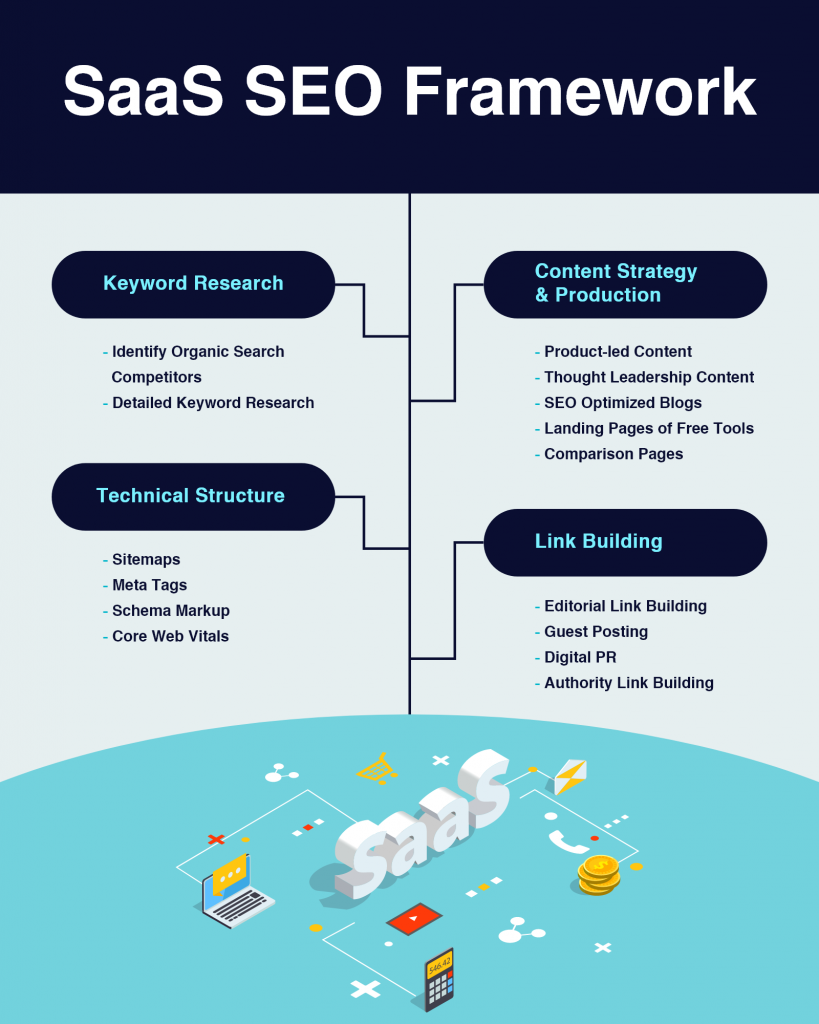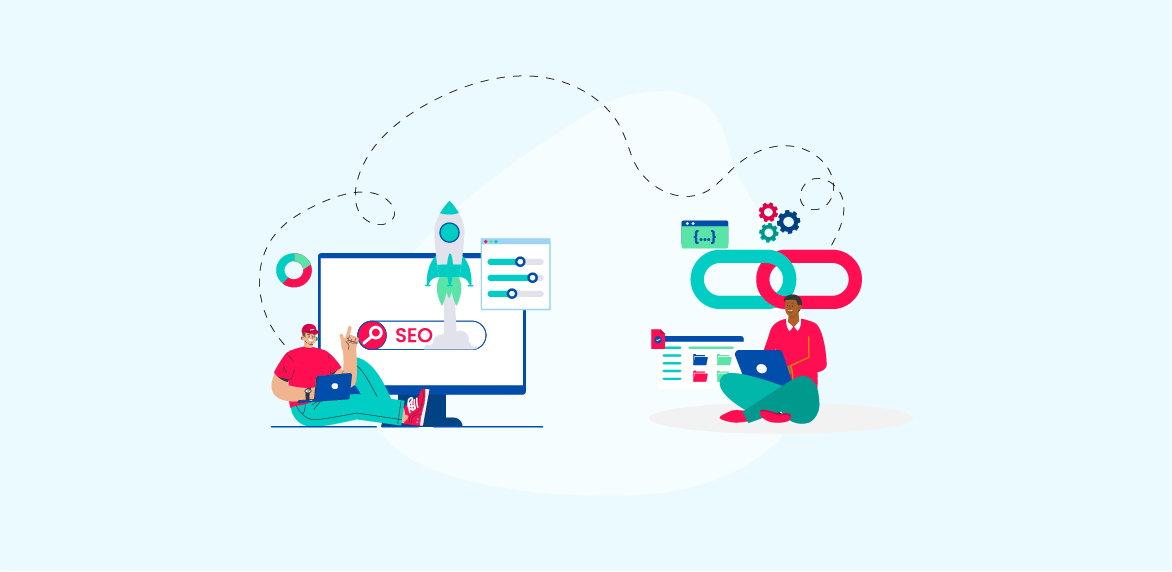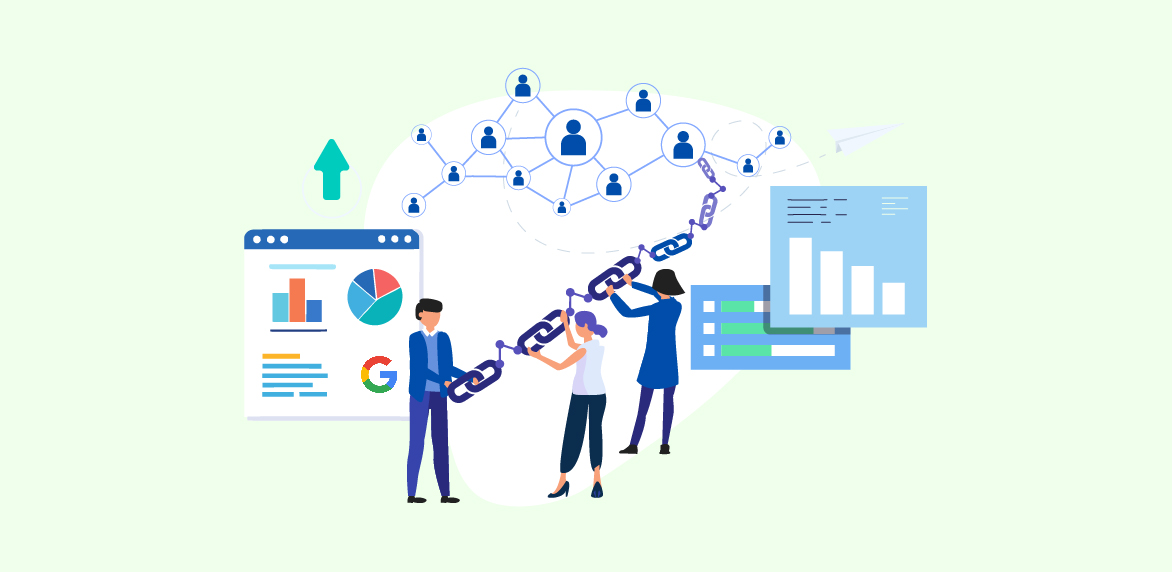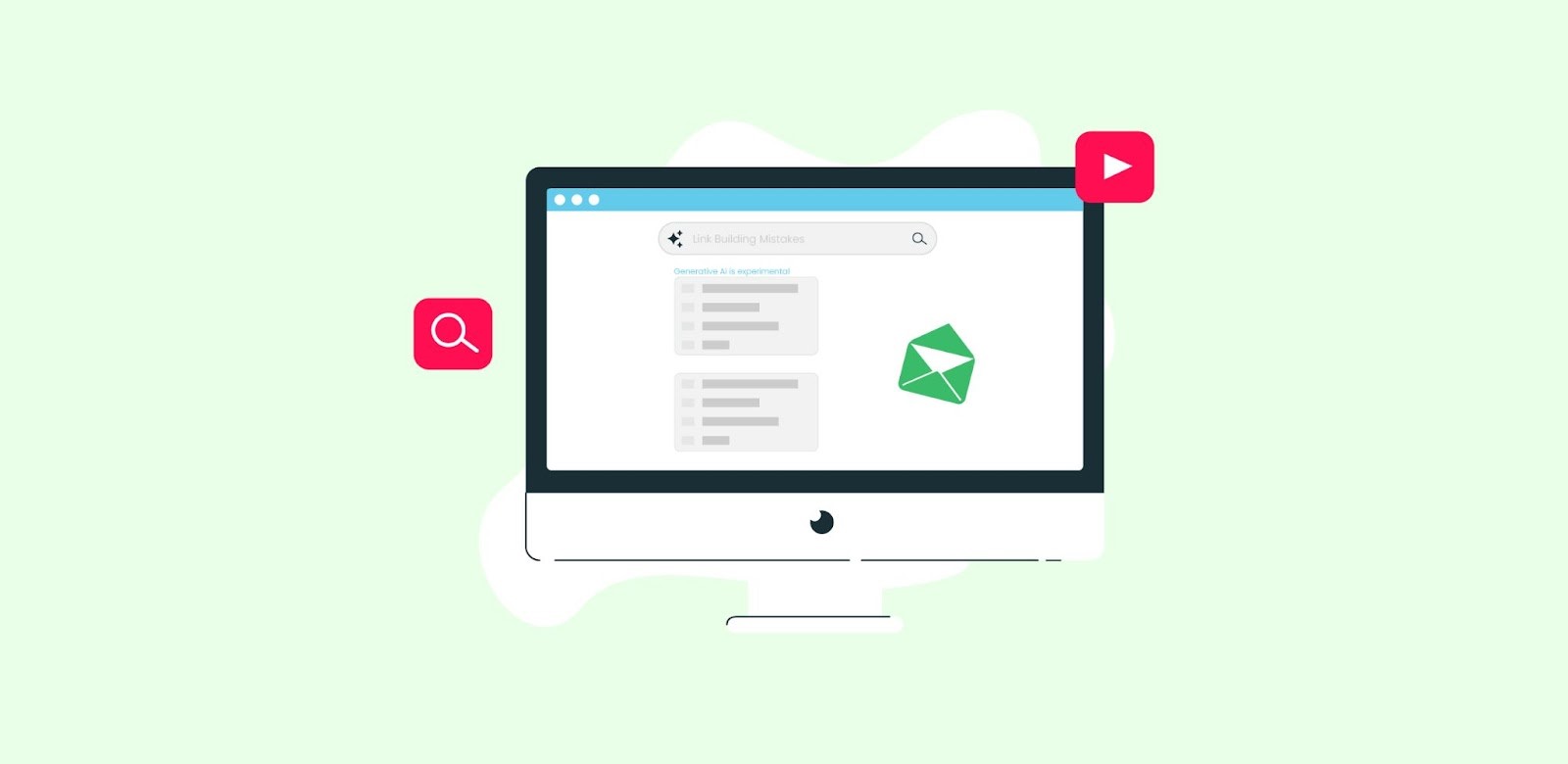A 2022 Guide To SaaS SEO
Have you ever wondered how companies like Canva, HostGator, and Mailchimp grew tenfold in a short period? Two words – SaaS SEO.
Let’s have a little context!
In today’s digital age, Software as a Service (SaaS) is a promising business model. The industry is ever-growing, and according to published statistics, its market has been ceaselessly expanding to a whopping amount of billion dollars every year for over a decade now.
So, just like clockwork, we keep seeing SaaS companies introducing incredible products every now and then. Every big and small SaaS enterprise wants to ride the wave. Naturally, the competition is more fierce than ever.
However, this report, which says 68% of online experiences begin with a search engine, is an indication that SaaS companies must put in maximum effort.
But, to make your SaaS project successful, following your traditional SEO is not enough. You’re targeting to get more than leads and conversions here; it’s about doubling your revenue and expanding your business.
Amid the neverending competition in the industry, it is necessary to build an impeccable SaaS SEO strategy that has all the right elements. Only then you’ll be able to gain a foothold and make your profits soar high.
So, before we learn the proven ‘SaaS SEO’ step by step, let’s start with understanding the basics first.
What Is SaaS Business Model?
SaaS companies are built on product-based models, and that is what makes them unique from other businesses. They offer a range of products: software, tools, platforms, suites, and more. In addition, none of their products have limited usage or are tangible. Moreover, they are updated, modified, and pivoted for multiple realms and industries over the course of time. And, with the option of adding more features for new markets/categories, SaaS companies have the edge in competing with SEO in the organic search space.
What Is SaaS SEO?
SaaS SEO directs the organic traffic to your SaaS website and allows you to earn top spots on the SERPs.
In comparison to paid marketing methods, SaaS SEO has proven to be more beneficial and long-lasting. Not only does it drive consistent traffic to your SaaS Website but also provides you with exponential organic growth.
On the contrary, the moment you turn off paid advertising, the traffic stops. SaaS marketers are also realizing the fact that investing in performance marketing come at a disadvantage.
It makes them visible in front of the audience, who are:
- Looking up for your software – a searcher knows your product and wants to have more information about it.
- Searching information about your software – a searcher is looking for software similar to yours, and they might not be ready to buy it yet.
- If you want to purchase a similar software, a searcher compares prices and deals.
- Searching for content related to your software – a searcher is looking for the content related to your software. They may decide to buy your software in the future.
Advantages of SaaS SEO
As SaaS SEO has got loads to offer, many SaaS companies are focusing more on organic growth. Have a look at the top of the list of advantages of SaaS SEO.
Exponential Growth
With the right SEO plan in place, you’d witness tremendous growth in traffic.
You have to start with the basics, which go something like this: pick connected keywords and create quality content targeting them. You can promote your content, earn links, and increase your rankings and growth.
Sticking to it will allow you to drive consistent traffic. And you can collect essential data from the content’s first launch and utilize it to drive more traffic.
Like clockwork, more quality content, more traffic. And let me tell you a fact here, this is what exactly big guns like HubSpot and Pipedrive did for the growth.
Reduces Cost Per Acquisition
If you want to reduce the cost per acquisition of your company growth, SaaS SEO is the answer. No matter how big or small your SaaS project is, SaaS SEO does reduce your CPA to an incredible extent. On the other hand, if you’re running an optimized campaign, you’re likely to reach a point where you won’t be able to reduce costs.
As we know, CPA is quite high at the start, but it does end up lessening as the growth compounds. Speaking of which, SEO does require ongoing investment, but it doesn’t make you pay for every click.
Converts Customers From Other Channels
A big chunk of SaaS SEO consists of content creation at the base. This plethora of high-quality content can be used for email marketing, social media, and also for driving paid traffic. In addition to that, you can promote your content to earn quality backlinks and also gain referral traffic.
So, by implementing the right strategy, you can convert customers from multiple marketing channels like a breeze. And that’s how it works as a crucial factor for your continuous SEO investment.
The Proven SaaS SEO Framework
Have a look at this framework of SaaS SEO. It consists of keyword research, technical structure, content strategy, and link building. Whether you want to apply B2B or B2C SaaS SEO, this framework works for both.
Keyword Research
When it comes to SaaS companies, keyword research is one of the strong pillars of the SEO framework. And to create your personalized keyword strategy, it is necessary to understand the user’s intent. It is in the best interest of your SaaS company that you know what your targeted audience is searching for while looking for a particular solution or a SaaS product or tool.
Technical Structure
Here’s a fact: implementing this SEO Framework will not give you incredible results if your site is flawed. The relation is direct; if your site is technically not well-built, there’d be no use in putting up quality content, targeting keywords, and all that jazz. Addressing the technical issues and making everything on your site work according to standard should be one of your priorities.
Content Strategy & Production
It revolves around producing high-end content pieces that draw the audience towards your SaaS product. Speaking of which, the content should offer some value to the users and cover every essential topic and keyword. The whole strategy requires you to plan and analyze the longer-term production of content after thorough research.
Link Building
Now, here’s the offsite element of SEO for the SaaS framework: link building. It creates a robust and reputable link profile that shows visitors and search engines your site’s authority. So, on the basis of your SaaS product niche, you need to decide which sort of websites you want to link from and which webpage you’d be linking to.
A Step By Step SaaS Strategy
Here’s how you can build an SEO strategy to make your SaaS enterprise successful.
Set your goals & KPIs
Goals and KPIs are undeniably essential for SaaS companies, and they also hold significance for SEO.
Having the knowledge of SaaS goals and KPIs will help you analyze if your SEO strategy is working out or not. And if not, what improvements do you need to make to get there?
Here’s a common example: for any SaaS company, it could be a basic goal to increase MRR (Monthly Recurring Revenue) by $3 million in a year.
Coming back to the point, in order to have the right SEO strategy in place, you need to understand MQLs, MRR, ARPU, SQLs, CAC, and more as you’re analyzing these metrics.
MQL (Marketing Qualified Lead) – a lead that downloaded your content and communicated with your marketing team.
SQL (Sales Qualified Lead) – a lead your sales team achieved as a potential customer.
MRR (Monthly Recurring Revenue) is a predictable revenue generated by a business in a particular month.
ARPU (Average revenue per user) – shows how much revenue a business is generating from a single active customer.
CAC (Customer Acquisition Cost) – how much a business spends exactly to get new customers.
So, learn more! Spend some time to understand these metrics, as they’ll help you measure your SEO actionable down the line.
Identify Your Organic Search Competitors
While searching for your competitors in the SaaS industry, you’ll come across two types of competitors. Direct and Indirect.
Direct competitors – they offer exactly what your product is offering. It might have different traits and features but cater to the same issues of users.
Indirect competitors – They offer products different from yours. But at the same time, they’re solving the same problems as your customers.
It’s necessary to search and acquire knowledge of both types of competition. You can use tools like Ahref or Semrush to find your organic search competitors.
After that, you need to figure out what’s working for your competitors when it comes to:
- Best-performing web pages
- Best-performing web sections
- Content that ranks high and has the most backlinks.
Doing this will allow you to save time and have the right knowledge base and actionable items. In most cases, it helps to take inspiration from your competitors, take their successful ideas, and execute better than them.
Detailed Keyword Research
In the SaaS market, keyword research means taking a deeper insight into the language your target audience uses. What keywords do they type in search engines while searching for your products, content, and services? After completely understanding this, you need to analyze and prioritize keywords for your SaaS website.
Take note that keyword research for SaaS websites mainly revolves around:
- Product/Service Landing Pages
- Knowledge base
- Blog posts
- Review/Comparison pages
Pro tip: whenever you come across a list of keywords related to your business, save it! You can always come back to it later when you’re creating your content strategy.
Create Product-led Content
Alright, it’s time to turn all your research into high-quality content.
Be mindful that you’d not be only creating some basic content but also lead magnets that will draw users in.
Speaking of which, product-led content works wonders in the SaaS market. This type of content is specifically based on solving the problems of your targetted audience with your product. All you have to do is to weave your product into the multiple forms of content you’re generating.
As a matter of fact, many SaaS websites receive the highest traffic on product-led content. If you check the blog of Ahref, you’ll find this is exactly what those guys do. Their visitors get to learn about the useful stuff while discovering how the tool works.
In case you find out there are hundreds of problems your users are searching for answers to, that means you just hit the bullseye. You can keep creating content focused on the problem’s solution and bring your product into the limelight. This way, organic search will become your #1 marketing channel.
Include Thought Leadership Content
Thought leadership content is content solely focused on your niche in the market. It gives you a chance to showcase all the information you’ve got on your industry, experience, and upcoming trends.
Having this type of content makes your SaaS website a go-to source of information for lots of users. You can create a series of weekly blogs and news sessions that will make people keep coming back to your site.
And it isn’t necessary to create content directly related to your product here. You can share information on anything related to your industry that will be helpful to users in any manner. It’s best to share information or opinions your users are unlikely to see anywhere else.
The trend of generating thought-leadership content isn’t fading any time soon. And it’d be highly empowering for your SaaS website. The goal is to make users bookmark your site, sign up for the emailing list, and share it with others, too.
Write SEO Optimized Blogs
Okay, it’s time to do some standard SEO. Pick a high search volume, low competition keyword. Type it in Google. Look at the SERPs (please check the 2nd and 3rd page, too). This will tell you what people are looking for, and you’ll get the blog post ideas. Then, you can proceed toward making multiple blog posts focused on your targetted keywords.
Present Free Tools On Landing Pages
Create landing pages for free tools and features of your software product. Many SaaS enterprises have found it to be incredibly useful.
Separate landing pages not only drive amazing traffic but also get you backlinks and promote your SaaS product better. You also open the floodgate to the stream of new leads and conversions. So, it’s a win-win situation.
Create Comparison Pages
In SaaS SEO, there exists a high demand for product comparison keywords. And it doesn’t matter if these keywords don’t have a higher search volume cause users searching for these keywords are already in their buying phase.
And you need to play smart over here. Make sure that your copy highlights the best part about your product multiple times. Focus on a set of features, price (only if the opponent is expensive), and user experience. You have to prove your product is better than the compared brand and any other alternative.
If you want inspiration, you can check out this comparison page.
Technical SEO Practices
While taking care of uniquely different SaaS SEO, don’t overlook the technical aspects. It’s uncool! And c’mon, despite doing all things correctly, you won’t be meeting your targets if your site isn’t optimized. Simply put, your site will be held back if you’re not focusing on technical SEO.
You have to make sure your SaaS website is meeting all the technical requirements of multiple search engines. Specifically, whatever actionable fall under indexing, crawling, ranking, and website structure. Here are some of the essential Technical SEO elements:
- Core Web Vitals
Core Web Vitals is an official Google ranking factor that measures page experience. It consists of three performance metrics: Largest Contentful Paint (LCP), First Input Delay (FID), and Cumulative Layout Shifts (CLS). You can learn more about it here.
- Schema Markup
Schema markups are the codes that ensure Google understands your structure. You have to set these codes according to your business for relevant results.
- Sitemap
A sitemap is like a file where you give information about all the elements on your website. It contains information about pages, images, videos, and other files too. With a neat sitemap and structure, your visitors, as well as Google, can more easily understand you.
- Meta Elements
Meta Elements are particular tags that provide structured metadata about your webpage. Use meta tags, titles, and descriptions to provide information for people who search for you on Google.
Link building For SaaS Companies
It goes without saying that your valuable content won’t reach your targetted audience without backlinks. You need to put some effort into gaining relevant backlinks to your high-quality content.
In the SaaS industry, the following tactics are effective for link building.
- Digital PR
It creates buzz about your content integrated with links in public. In Digital PR, you focus on promoting publicity-generating content in your targetted markets. And in return, you drive traffic from social and search channels to your site. It includes:
- Thought leadership content
- Podcast appearances
- Press releases
- Help a reporter out (HARO)
- Social media campaign
- Editorial Link Building
When the editor of another site links back to your site, it’s called editorial link building. It is one of the top-notch link-building tactics to increase the rankings of target URLs.
- Authority Link Building
It involves acquiring links from high authority websites, such as government, news, educational, and more. For example, some educational sites might link back to your site as a topic authority.
- Guest Posting
When you post a blog or opinion on another site, that’s called guest posting. This offers value to the other website in exchange for a link back to your own website. Guest posting is one of the essential link-building tactics and gives you amazing reach and traffic.
Final Thoughts
By implementing SaaS SEO, you can grow your revenue tenfold, promote your product better, and get the top places on SERPs.
Indeed, the whole process and achieving results require a long-term outlook. But with the right strategy in place, you’d start seeing the long-awaited results sooner rather than later. In case you don’t have the in-house team to do the job, simply reach out to the agencies offering SaaS SEO services.
So, try it out, and good luck!











